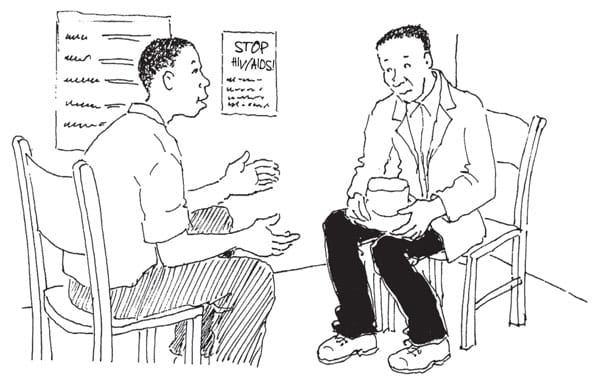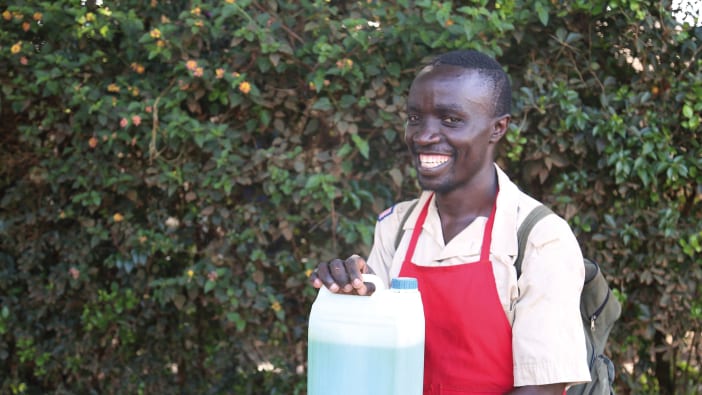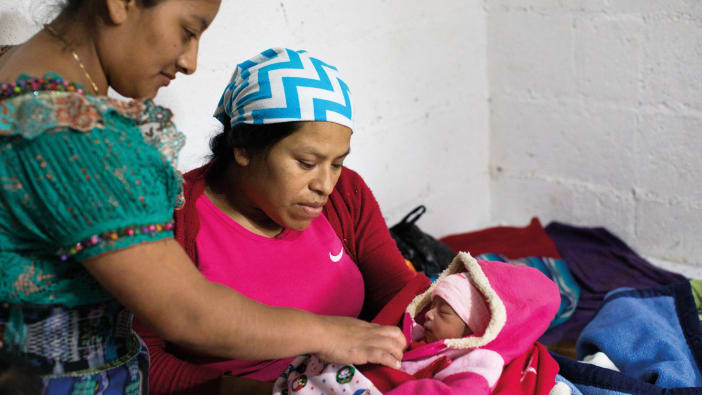How to run this activity
Step 1
Discuss HIV testing issues and concerns
Clarify that an HIV test is the only way of knowing for sure whether or not you have the virus in your body.
Ask:
- What happens during VCT?
- What do you need to think about before having the test?
- How would it feel if your test result was HIV-negative?
- How would it feel if your test result was HIV-positive?
- Who would you tell and how might they react?
- Who among you would decide not to go for a test?
Get everybody to stand together in the middle of the room. Ask those who say they would not go for a test to take a step back. Those who would go for a test should move forward, so the two groups are separate.
Step 2
Imagine going for VCT
Get participants to imagine going through the VCT process, describing it using your own words:
Explain: ‘I would like you to relax and imagine you are now going for VCT. You go for pre-test counselling, and then give a blood sample. The blood sample is tested and you are coming for the results. Your counsellor invites you into the counselling room and asks you to sit down. The counsellor asks if you still want to know your result.’
Ask: ‘Is there is anybody who does not want to know their result?’ Ask them to put up their hand.
If anyone puts their hand up, ask them to move to join the group at the back who chose not to go for VCT.
Step 3
Give ‘test results’
Get each participant who says they want their test result to pick one of the folded pieces of paper.
Explain: ‘Imagine the piece of paper you have picked represents your test result. Open it up. It is in the shape of either a square or a triangle. One means that your test result is HIV-positive, the other that your test result is HIV-negative. How would you feel if I told you that a square means an HIV-negative result, and a triangle means an HIV-positive result?’
Ask: ‘Those whose test result is negative, how do you feel? Those whose test result is positive, how do you feel? What would you do next? Who would you tell?’
Then ask how people would feel if the results were reversed – that is, if a square meant an HIV-positive result and a triangle meant HIV-negative.
Include in the discussion those who ‘decided not to go for a test’, or who did not get their result.
Ask: ‘How do you feel now about not knowing your HIV status?’
Step 4
Discuss where testing is offered
Find out from participants whether they know where VCT is available in their area. Discuss what options might be available for participants to access VCT. Give participants the name, location, opening times and cost of VCT centres. Try also to provide details of centres in other towns outside the area, for people who want to be sure of confidentiality.
Step 5
VCT counsellor presents information, answers questions and – if available – offers testing (optional)
If you have a counsellor or representative from a local centre offering VCT, ask them to describe the services offered and answer questions from participants. If mobile HIV testing and counselling services have been arranged, they can also explain how participants can use these services.
Going for voluntary counselling and HIV testing (VCT)
Why go for voluntary counselling and HIV testing (VCT)?
- If you are aware that you are living with HIV, there are many things you can do to stay healthy, live a long life and still achieve your goals and dreams.
- If you know you are living with HIV, you can enjoy sex while ensuring that you protect yourself from re-infection and protect others from getting infected.
- If you are expecting a child and know that you are HIV-positive, there are many things you can do to minimise the chance of HIV being transmitted to the child.
How does VCT work?
Before going for an HIV test, either alone or with your partner, you spend time with a counsellor. The counsellor will help you think about your issues and concerns, and will ask you questions like:
- What will you do if the test shows you are living with HIV?
- What will you do if the test shows no sign of HIV?
- Are you sure that you want to go ahead with the test?
The counsellor will meet you again when you get the test result. He or she will help you think through the implications of your HIV test result and plan what to do next.
These discussions are confidential. The doctor and professional counsellor should not tell anyone else about your test result or anything that you have said. Sharing the result is up to you.
The ‘window period’
There are different types of HIV test, which look for different signs of HIV being present in the body. After a person gets infected with HIV, it takes time for some of these signs to develop. Because of this, test results may give a ‘false negative’ for up to six months. A false negative is when a test result says that a person is not HIV-positive even though they actually are.
The amount of time it takes for signs of HIV to show up in tests is called the ‘window period’. The length of the window period will depend on the person’s body and the type of test that is used. Your health worker can advise you about which test to use and when it will give an accurate result.
People are particularly infectious during the first three months after they get infected with HIV. However, because of the window period they may not know that they are HIV-positive. This means that people need to take precautions even if they think they do not have HIV, and get tested again after the window period.
As HIV tests improve, it is becoming possible to get an accurate test result more quickly.
Adapted from the Guardians of our children’s health (GOOCH) toolkit. See Resources page for more details.










